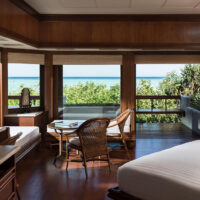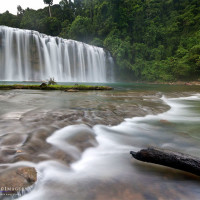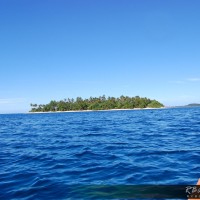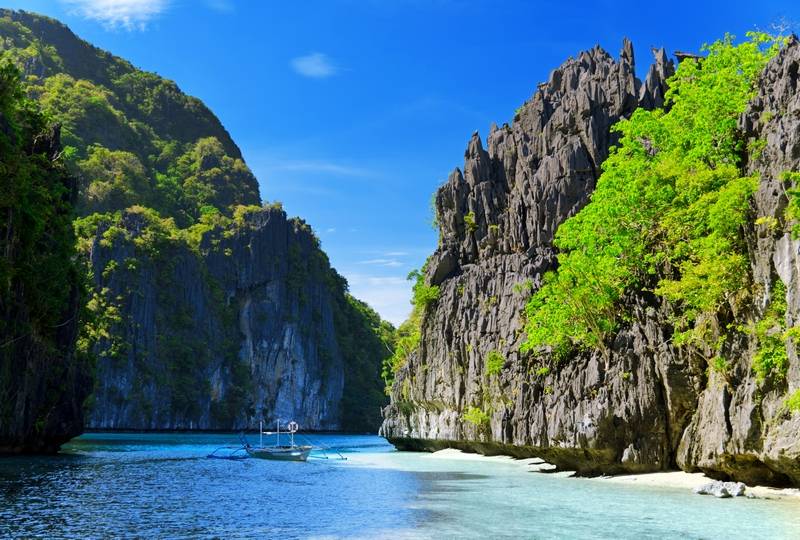
No doubt, Palawan is a tropical paradise – with stunning seascapes and spectacular exotic wildlife and marine life not to mention the world famous tourist attractions including El Nido Cliffs, Ursula Island Game Refuge and Bird Sanctuary, St. Paul Subterranean Park, Coron Island Protected Area, Tubbataha Reef National Marine Park, and the Calauit Game Preserve and Wildlife Sanctuary. And the province’s mystic beauty continues to unravel to the delight and enjoyment of the hundreds of thousands of tourists that have picked Palawan as their dream holiday getaway.
The Tabon Cave
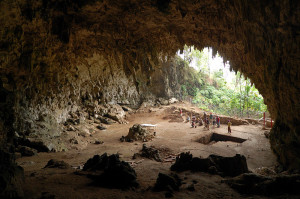
This cave complex located in Lipuun Point, Quezon in Palawan, has a span of 138 hectares of rugged cliffs and deep slopes. The Tabon Cave complex was a discovery of the late Dr. Robert B. Fox, an American archaeologist who headed the National Museum team of Archaeologists in 1962. Their archaeological explorations resulted in the discovery of fossil human bones which are said to date back from 22,000 to 24,000 years ago. Tabon cave along with other 28 caves which were fully explored, showed signs of habitation or as burial sites by ancient people. The cave complex was declared a Museum Reservation Site by the Philippine government in 1972. The Tabon Cave complex is currently managed and maintained by the National Museum.
The Tabon cave complex is accessible via a 30-minute banca ride from the town of Quezon, a Southern municipality of Palawan. It is 155 kilometers away from Puerto Princesa City.
Rasa Island
This is one of the leading eco-tourism destinations in the province. It is considered a bird sanctuary, especially because it plays home to the critically endangered Philippine Cockatoo or Cacatua haematuropygia. Other endemic Palawan wildlife that resides in Rasa Island include black-nape oriole, the racquet-tailed parrot, rufous-tailed tailorbird and white-vented shama. Like the other protected areas in Palawan, the local government unit of Narra, and the people have worked closely together in making sure that the endangered species are properly protected.
San Vicente Beach
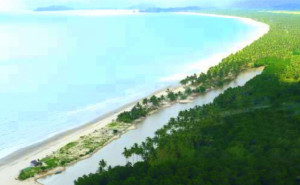
A municipality on the northwestern side of the main island is San Vicente, about 194 kilometers away from Puerto Princesa City. It is defined by its rugged terrain and one of the longest beach shorelines in the Philippines – a 14 kilometer beach shoreline in Barangay New Agutaya. Port Barton in the town proper is a frequented tourist zone.
Fort of Taytay
About 250 kilometers away from Puerto Princesa is where Fort of Taytay can be found. The first Spanish colony was established in Taytay and Cuyo – the two oldest towns in the province. A fort was constructed in 1667 and was completed in 1783 – that’s over a hundred years of construction of a fort that measures about 50 square meters and about 30 to 40 feet high. The fort served three purposes – a watchtower, a house for Spanish officials, and a shelter for people if attacked by unfriendly forces. Aside from the fort, Taytay is also home to Lake Danao and the Malampaya Sound. Lake Danao is a lake on top of the mountain where some endemic wildlife thrives.
Nagtabon Beach
This beach is located in Bacungan, a southern barangay in Puerto Princesa. It is a popular tourist destination in Puerto Princesa City as it just 45 minutes away from the city proper. The beach has white sand and pristine blue waters, making a fantastic foreground for the breathtaking South China Sea view.


